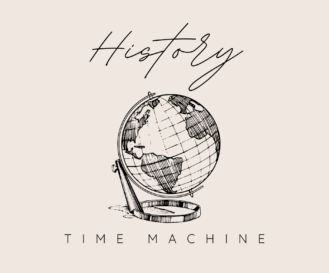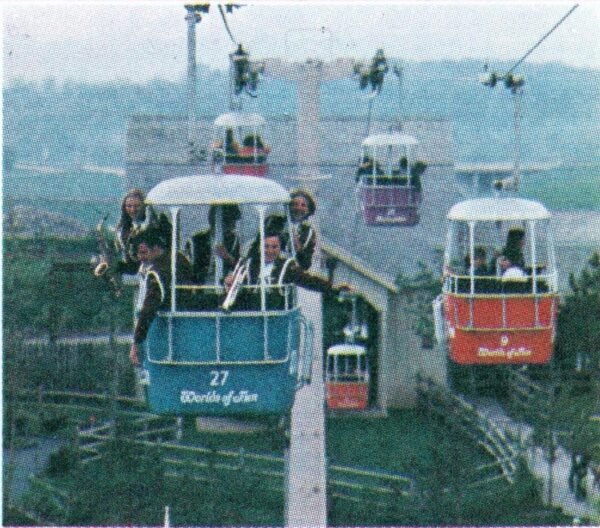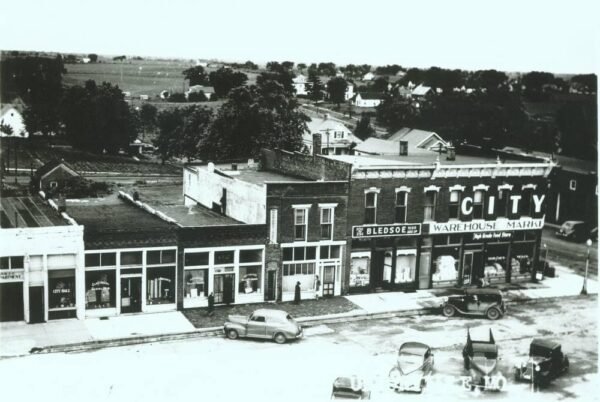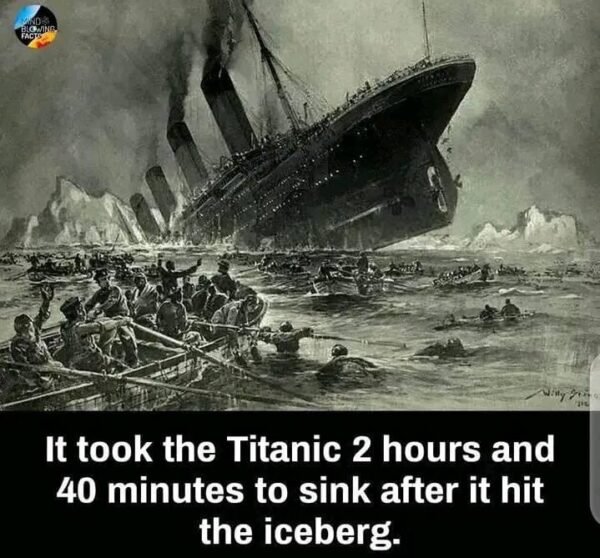The drive-thru is a staple of modern fast food, offering convenience and speed to customers on the go. But did you know that the first McDonald’s drive-thru was created out of necessity to accommodate soldiers at Fort Huachuca Army Base in Sierra Vista, Arizona? This innovation not only transformed the way we experience fast food but also highlighted the impact of military needs on everyday life. Let’s dive into the fascinating story of how the drive-thru was born on January 24, 1975, and explore its lasting influence on the fast-food industry.
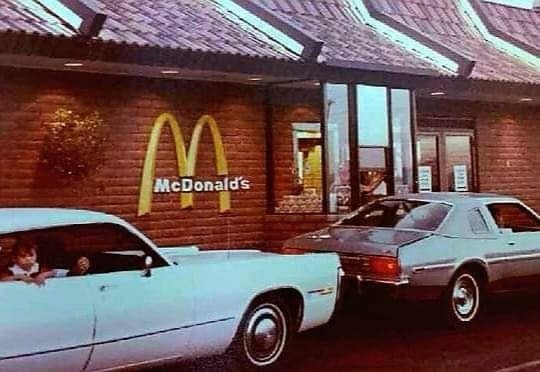
The Problem at Fort Huachuca
In the mid-1970s, a McDonald’s franchise near Fort Huachuca Army Base in Sierra Vista, Arizona, faced a significant challenge. Due to military regulations, soldiers in fatigues were required to stay in their vehicles when off base. This rule meant that they couldn’t enter the McDonald’s restaurant to order food, leading to a noticeable decline in sales.
Fort Huachuca, a vital military installation, had a substantial population of soldiers who relied on local businesses for their dining needs. The restriction on soldiers leaving their vehicles created a gap between this potential customer base and the restaurant, causing frustration for both the soldiers and the franchise owner.
The situation called for an innovative solution to bridge this gap and serve the soldiers while adhering to military regulations. This need for adaptation would soon lead to a groundbreaking change in the fast-food industry, making it easier for soldiers to access meals without leaving their vehicles.
For more inspiring stories of American innovation and how citizens honor their country’s history, check out 10 Ways to Show Your American Pride Every Day.

The Innovative Solution
Faced with the challenge of declining sales and the need to accommodate soldiers’ regulations, the McDonald’s franchisee at Fort Huachuca came up with a simple yet revolutionary idea: create a drive-thru. On January 24, 1975, this franchisee literally knocked a hole in the wall of the restaurant and installed a window, allowing soldiers to place their orders and receive their food without leaving their vehicles.
This innovative solution was not only practical but also incredibly effective. The drive-thru window enabled McDonald’s to serve the soldiers quickly and efficiently, adhering to the military’s rule while meeting the needs of its customers. The immediate impact was a significant boost in sales, as soldiers flocked to this convenient new way of getting their favorite meals.
The success of this first drive-thru quickly caught the attention of other McDonald’s franchises and fast-food competitors. It wasn’t long before the drive-thru concept spread across the country, revolutionizing the fast-food industry. Today, drive-thrus are a common feature of many fast-food restaurants, providing unparalleled convenience for customers on the go.
To see how other military innovations and contributions have shaped American life, explore Saluting Savings: The Best Military Discounts Across America, highlighting various ways to honor and support our servicemen and women.
Fort Huachuca Army Base and Its Influence On McDonalds
Fort Huachuca, located in Sierra Vista, Arizona, is a significant military installation with a rich history dating back to its establishment in 1877. It has played a crucial role in various military operations and continues to be an essential base for the U.S. Army. The presence of such a vital military base brought a steady stream of soldiers to the area, impacting local businesses, including the nearby McDonald’s.
Background on Fort Huachuca
- Historical Significance: Fort Huachuca has been a central hub for military training and operations, particularly in communications and intelligence.
- Community Impact: The base has fostered a strong relationship with the local community, contributing to the economy and supporting local businesses.
Impact on Local Businesses The military regulations at Fort Huachuca, particularly the rule requiring soldiers to stay in their vehicles while wearing fatigues, posed a unique challenge for businesses. This regulation aimed to maintain a professional appearance and adhere to military protocols, but it inadvertently limited soldiers’ ability to patronize establishments like McDonald’s.
McDonald’s Adaptation The McDonald’s franchise near Fort Huachuca had to innovate to survive. By creating the first drive-thru, the franchise not only catered to the soldiers’ needs but also set a precedent that would reshape the fast-food industry. This adaptation underscores the importance of understanding and responding to the needs of a community, particularly one with unique circumstances like a military base.
American Pride and Military Service The story of the first McDonald’s drive-thru is a testament to American ingenuity and the ability to adapt to serve those who serve the country. For more ways to honor our servicemen and women and show American pride, check out 10 Ways to Show Your American Pride Every Day.
By addressing the needs of soldiers and adapting to military regulations, the McDonald’s near Fort Huachuca demonstrated a remarkable ability to innovate and serve its community. This innovation not only boosted sales but also laid the groundwork for a new standard in the fast-food industry, showing the profound impact a single adaptation can have on a global scale.
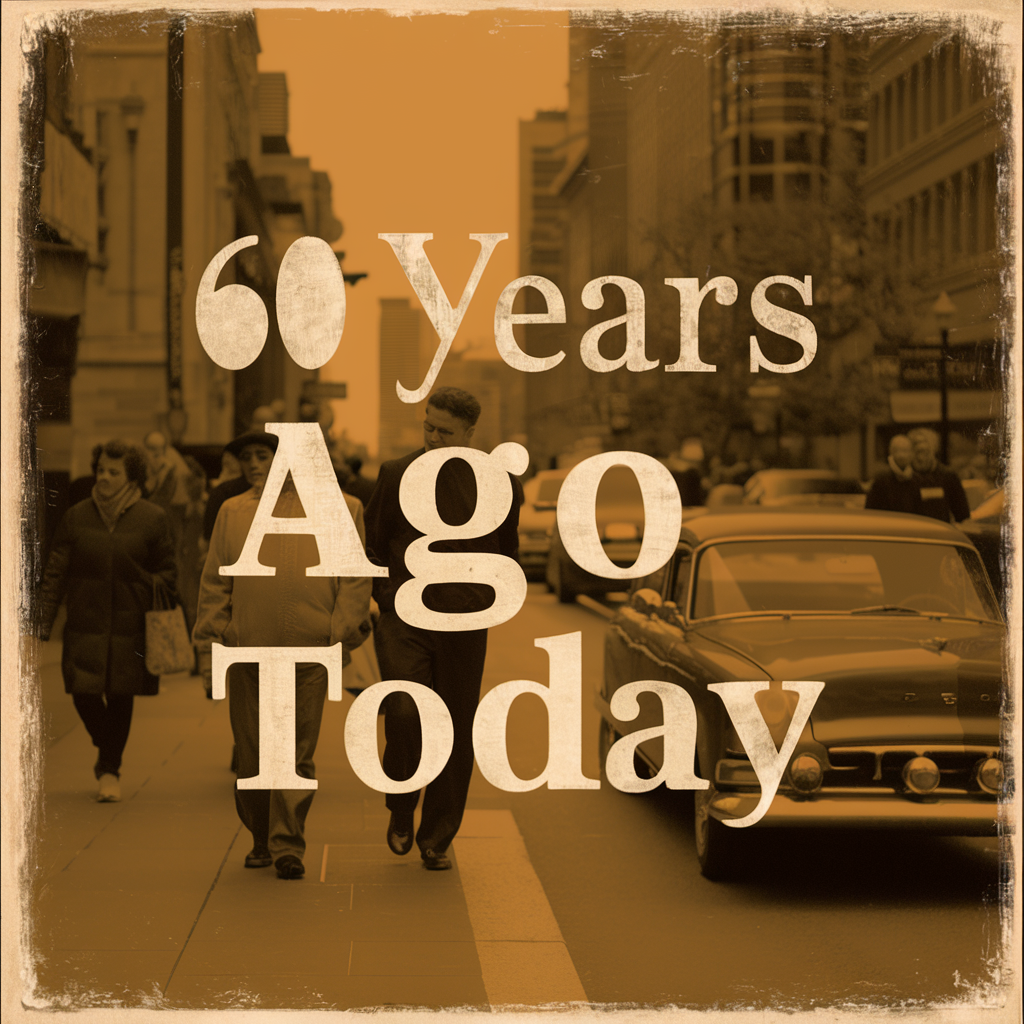
Expansion and Evolution of the Drive-Thru Concept
The success of the first McDonald’s drive-thru at Fort Huachuca quickly demonstrated the immense potential of this new service model. Recognizing the benefits of increased convenience and efficiency, McDonald’s and other fast-food chains began to adopt and expand the drive-thru concept nationwide.
Spread to Other Locations Following the initial success in Sierra Vista, Arizona, other McDonald’s franchises rapidly implemented drive-thrus. The innovation proved to be a game-changer, especially in suburban and rural areas where car travel was the norm. By the late 1970s, drive-thrus had become a common feature in many McDonald’s restaurants across the United States.
Industry Adoption The drive-thru model wasn’t just a hit for McDonald’s; it also caught on with other fast-food chains. Competitors like Burger King, Wendy’s, and Taco Bell quickly saw the advantages of drive-thrus and started incorporating them into their business models. The drive-thru became synonymous with fast food, revolutionizing how Americans dined on the go.
Technological Advancements As the drive-thru concept evolved, so did the technology supporting it. Early drive-thrus were simple windows, but they soon incorporated intercom systems for taking orders. Today, modern drive-thrus feature digital menu boards, mobile ordering apps, and advanced kitchen technology to speed up service and improve accuracy.
Customer Convenience The primary appeal of the drive-thru is convenience. Customers can order and receive their food without leaving their cars, making it an ideal option for busy people, families with children, and those who prefer not to dine indoors. This convenience has helped drive-thru sales to become a significant portion of fast-food revenue.
Military Discounts and Honors The innovation of the drive-thru is a reminder of how businesses can adapt to serve the needs of those who serve. Many fast-food chains, including McDonald’s, offer military discounts as a token of appreciation. To discover various deals available to military personnel, check out Saluting Savings: The Best Military Discounts Across America.
Influence on the Fast-Food Industry The drive-thru’s influence extends beyond just McDonald’s. It set a new standard for the fast-food industry, emphasizing speed, convenience, and customer satisfaction. The drive-thru model has even expanded beyond fast food to other sectors, such as pharmacies, banks, and coffee shops, further illustrating its widespread impact.
By embracing the drive-thru concept, McDonald’s and other fast-food chains were able to meet the evolving needs of their customers, setting the stage for future innovations. The drive-thru remains a crucial aspect of the fast-food experience, continually adapting to incorporate new technologies and meet customer expectations. This evolution highlights the importance of innovation in maintaining relevance and success in the competitive fast-food industry.
Lasting Impact on McDonald’s and the Fast Food Industry
The introduction of the drive-thru at McDonald’s not only transformed the company but also had a lasting impact on the entire fast-food industry. This simple yet revolutionary innovation has shaped the way fast-food restaurants operate and how customers experience their services.
Customer Convenience
The drive-thru’s most significant contribution to the fast-food industry is the unparalleled convenience it offers. Customers can quickly and easily order their meals without leaving their cars, making fast food even faster. This convenience is particularly appealing to busy individuals, families, and those with limited mobility. The ability to order and receive food in minutes has set a new standard for the industry.
Technological Advancements
Over the years, the drive-thru concept has evolved with technological advancements, further enhancing customer experience and operational efficiency:
- Digital Menu Boards: These have replaced traditional static menus, allowing for dynamic content and easy updates to promote specials or new items.
- Mobile Ordering: Integration with mobile apps has streamlined the ordering process, enabling customers to place orders ahead of time and simply pick them up at the drive-thru.
- Voice Recognition: Some modern drive-thrus are experimenting with AI and voice recognition technology to improve order accuracy and speed.
Operational Efficiency
Drive-thrus have also driven significant improvements in the operational efficiency of fast-food restaurants. By creating a separate lane for car orders, restaurants can handle more customers simultaneously, reducing wait times and increasing throughput. This dual-channel approach allows for better resource allocation and improved service during peak hours.
Economic Impact
The drive-thru model has had a substantial economic impact on the fast-food industry. It has helped increase sales, particularly in locations where dine-in options are less feasible or during times when indoor dining is restricted, such as during the COVID-19 pandemic. The drive-thru has proven to be a resilient business model that can adapt to various market conditions and consumer preferences.
Influence on Other Industries
The success of the drive-thru in the fast-food sector has inspired its adoption in other industries:
- Pharmacies: Drive-thru windows for prescription pickups.
- Banks: Drive-thru banking for transactions and consultations.
- Coffee Shops: Popular coffee chains have embraced drive-thru services to cater to on-the-go customers.
Military Contributions and Innovations
The drive-thru’s origin story at Fort Huachuca highlights the significant role the military plays in fostering innovation. For more stories of military contributions and innovations, check out American Patriots: The Legacy of Bravery and Resolve.
Future of Drive-Thrus
Looking ahead, drive-thrus will continue to evolve with emerging technologies and changing consumer habits. Innovations such as automated ordering systems, contactless payment options, and enhanced digital interfaces will further streamline the drive-thru experience.
The drive-thru’s lasting impact on McDonald’s and the fast-food industry underscores the importance of innovation and adaptability in business. By continually improving and expanding the drive-thru model, fast-food chains can meet customer needs more effectively and maintain their competitive edge in a dynamic market. This legacy of innovation, born from a simple solution to a local problem, exemplifies how creativity and responsiveness can lead to widespread change and lasting success.
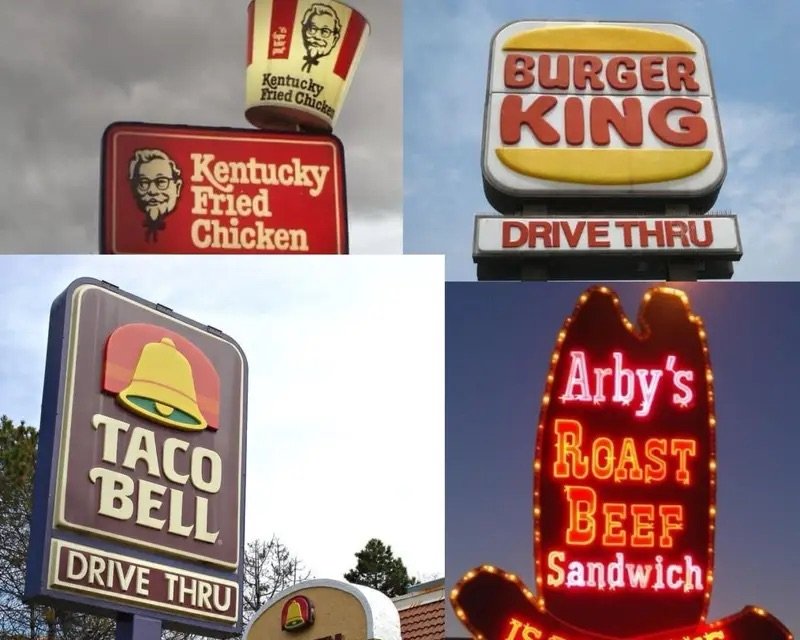
Other Significant Innovations in McDonald’s History
The drive-thru is just one of many innovations that have contributed to McDonald’s success and influence in the fast-food industry. Over the years, McDonald’s has introduced several other significant innovations that have shaped the way we eat and experience fast food.
Menu Innovations
McDonald’s has continuously evolved its menu to meet changing customer preferences and dietary trends. Some of the most notable menu innovations include:
- Big Mac: Introduced in 1967, the Big Mac became an iconic menu item and a symbol of the McDonald’s brand.
- Happy Meal: Launched in 1979, the Happy Meal catered to children with a combination of food and a toy, making it a favorite among young customers.
- McCafe: In 1993, McDonald’s expanded its beverage offerings with the introduction of McCafe, providing a range of premium coffee drinks and bakery items.
Operational Innovations
Efficiency and consistency have always been at the core of McDonald’s operations. Key innovations include:
- Speedee Service System: Developed in the 1940s, this system revolutionized fast food by standardizing kitchen operations and reducing service time.
- Automated Kitchen Equipment: McDonald’s has continually invested in advanced kitchen technology to streamline food preparation and ensure quality. For instance, automated fryers and grills have improved efficiency and consistency across locations.
Sustainability Initiatives
In recent years, McDonald’s has made significant strides in sustainability, focusing on reducing its environmental footprint. Initiatives include:
- Sustainable Packaging: McDonald’s has committed to using 100% sustainable packaging by 2025, including recyclable and compostable materials.
- Renewable Energy: The company is investing in renewable energy projects to power its restaurants and reduce greenhouse gas emissions.
Customer Experience Enhancements
To stay competitive and meet evolving customer expectations, McDonald’s has introduced various enhancements to the customer experience:
- Self-Order Kiosks: These kiosks allow customers to place their orders digitally, reducing wait times and improving order accuracy.
- Mobile App: The McDonald’s mobile app offers features like mobile ordering, exclusive deals, and loyalty rewards, making it easier for customers to interact with the brand.
- Delivery Services: Partnering with third-party delivery services, McDonald’s has expanded its reach, allowing customers to enjoy their favorite meals at home.
Cultural and Community Impact
McDonald’s has also played a significant role in supporting communities and celebrating cultural moments:
- Ronald McDonald House Charities: Established in 1974, this organization provides support and resources for families of seriously ill children, demonstrating McDonald’s commitment to giving back.
- Support for Military Families: McDonald’s continues to honor and support military families through various initiatives and discounts. For insights into how businesses support the military, visit Saluting Savings: The Best Military Discounts Across America.
Innovations in the Fast Food Industry
McDonald’s influence extends beyond its own operations, inspiring innovations throughout the fast-food industry. Competitors have adopted similar practices, leading to industry-wide advancements in efficiency, customer service, and menu diversity.
For a broader perspective on American innovation and legacy, consider reading American Patriots: The Legacy of Bravery and Resolve, which highlights the enduring spirit of American ingenuity.
By continually innovating and adapting to market trends, McDonald’s has maintained its position as a leader in the fast-food industry. These innovations, from menu expansions to sustainability efforts, reflect the company’s commitment to meeting customer needs and improving the overall dining experience.
As an Amazon Associate we earn from qualifying purchases through some links in our articles.
